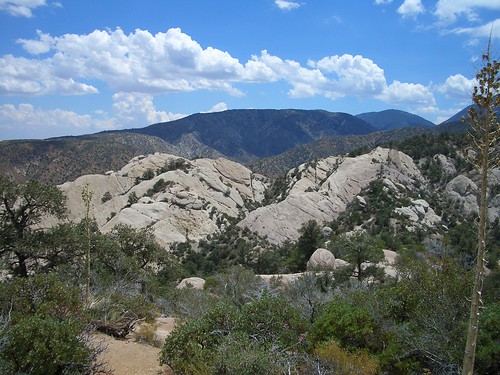
It has now been a couple of weeks since President Obama declared the San Gabriel Mountains in California a National Monument, and I’m still very excited about the great prospects ahead for that area based on this historic proclamation. This is another rare opportunity for the Forest Service to manage a national treasure with national monument status and – more importantly – it’s an opportunity for us to do more to protect and showcase the San Gabriel Mountains for millions of visitors and local residents each year.
This recent designation is a terrific way to celebrate an area that represents significant archeological, cultural, historical and scientific heritage for California and the nation, and it brings along extra benefits as well. National monument status will help enhance recreational access and interpretative and environmental education for millions of visitors each year near one of the major metropolitan areas in the nation, while helping to preserve the historical and cultural heritage of the region. Monument designation is a tremendous recognition and opportunity for the Forest Service, for the region, and for everyone who enjoys the forests.
I invite you to look at the detailed map of the area, which is also located on our “San Gabriel Mountains National Monument” web page. The boundaries of the monument were determined by a number of factors. Foremost, the Antiquities Act of 1906 authorizes the president to designate “historic landmarks, historic and prehistoric structures and other objects of historic or scientific interest” as national monuments. This designation pertains to Federal lands only and enhances protection for these lands. The Antiquities Act requires that the lands designated “shall be confined to the smallest area compatible with the proper care and management of the objects to be protected.”
Included in the monument are designated wilderness areas, wild and scenic rivers and streams, critical wildlife and plant habitats, important geologic areas, such as the Devils Punchbowl Natural Area, and cultural and historic resources including the Mt. Wilson Observatory and the Aliso-Arrastre Special Interest Area, to name a few.
While certain additional areas of the Angeles and San Bernardino National Forests have significant historical, geological or scientific features, they were not included within the monument boundaries based on site-specific concerns, including extensive infrastructure, existing encumbrances and complex access or management needs. Some areas were not included in order to afford the best opportunity for effective monument management. For example, areas such as the highly-developed Mt. Baldy Ski Area, the communities of Wrightwood and Mt. Baldy, and areas of the forest with particularly extensive water and utility infrastructure facilities were excluded. Importantly, areas of the national forests not included within the monument will continue to be managed according to existing requirements and management policies, which provide for protection, preservation and improvement of key resources within those areas. The Forest Service will continue to work with the public to steward those areas. Over the years, the Forest Service has taken extra care to successfully oversee all lands in the region entrusted to us to manage, and I intend to continue on this important course in the coming years, no matter where those lands may be located.
Now that we have a new national monument on Forest Service-managed land, we must create a plan to manage it, and by law we must do so within three years from the date of the proclamation. We won’t let that time go to waste. We will seek feedback from the local communities in the region, taking care to engage with constituents and citizens with diverse interests and backgrounds to make sure we get it right when we create the new management plan. In short, we plan to be as inclusive as possible and reflect the diverse interests of the surrounding communities.
Being a part of an organization like the Forest Service, I often get a chance to do great things for the communities in which we are entrusted with public lands. It doesn’t get any more rewarding than having the President declare a national monument on these lands and participating in such a historic occasion while simultaneously charting out an important course for the future for the local communities near the San Gabriel Mountains, and for the nation.

